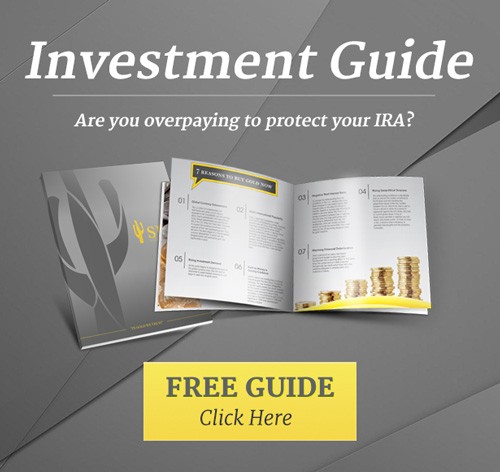Investment Guide
Post on: 1 Апрель, 2015 No Comment

Develop an Asset allocation
in line with your risk tolerance.
Asset allocation (AA) is a financial term that simply refers to what percentage of money you decide to put into stocks, bonds and cash—the primary asset classes. It is the most significant decision regarding risk and potential returns you can make.
Before you make the decision about your asset allocation, you need to know what it is exactly you are trying to accomplish. No, to grow your investments as much as possible is not the right answer.
You begin by defining your goals and the target amounts needed as best you can. Younger investors may have several goals they’re working toward such as retirement, college for the children, and a new home. Each of these goals has a different time frame and a different target amount of assets needed. And each requires a different asset allocation.
Since asset allocation is all about risk management, that’s where we will begin. The more you understand about risk, the more able you will be to make good decisions about asset allocation and the more you will understand about investing in general.
This link to Vanguard’s How to Create Your Investment Plan will help you get organized.
What is Risk?
There are a few different ways in which risk is measured and discussed, but we will start with this definition: The risk of putting your money into stock investments is that it may not be there for something important when you need it.
The higher percentage of stocks you own, the higher your potential for big returns. But risk is a double-edged sword. Risk means in no uncertain terms that you might not achieve those big returns, and you may not have the money when you need it. Investing offers no guarantee, otherwise there would not be any risk. 2 Knowing this, smart investors always seek a good balance between risk and potential reward.
Asset Allocation and Risk
Jack Brennan, former CEO of The Vanguard Group and author of Straight Talk on Investing has this to say, The very first step in assembling an investment portfolio is to decide how to spread your dollars among stock, bond, and cash investments—Spend a lot of time on this decision—it is the most important one you will make.
Controlling risk and maximizing potential returns for the chosen level of risk is the goal of your overall investment strategy. When making the choice of an AA, you have to seriously consider each goal, it’s time line, and how much you are depending on the money being there.
Your decision on how much risk you are willing to take is a personal choice. That’s why one recommendation for how much stock to own should not be suggested to all investors. Don’t compare your allocation to those of others, it isn’t relevant. Risk management is as much a personal behavioral issue as it is a calculated assessment of need and willingness.
This link leads to a good article on risk by Pete Bernstein.
Here is a good perspective on how risk should be approached by Zvi Bodie, professor of finance, and Paula Hogan, CFP, CFA.
Emotional Temperament and Risk
Newer investors often overestimate their tolerance for risk. That has been clearly confirmed by the number of investors who abandon their asset allocation and bail out of stocks at the bottom of a bear market.
Here is what Vanguard has to say:
Our experience suggests that even long-term investors pay attention to short-term downside risks during the holding period. Furthermore, their real-time reaction to downside risk is much more significant than indicated prior to the realization of the downside risk.
So, how much of a loss is really going to keep you pacing the floor at night? How much of a loss is going to make you flinch?
What makes investors flinch?
1. Inexperienced investors move into defensive mode under stress and fall back on gut instinct, which quickly overrides the AA decision they made in good times.
2. Perception of risk is not constant. Risk may be perceived to be practically non-existent in good times and extremely high in times of market stress or personal emotional stress. If you have not been through a full market cycle, including a bear market, it will be very difficult for you to properly asses your reaction in times of real stress.
3. Choosing an asset allocation seems so simple to do that it’s often done without much planning. After all, you just have to pick a number. And with many newer investors, that’s exactly what they do. Investors making the choice of an AA in good market conditions often tend to focus only on returns. They don’t see any risk. And that’s a point worth remembering—if you can see the risk, then it really isn’t a risk because you can take measures to avoid it. No, risk is all about surprises that can spoil the party.
So, what should you do? First, realize that your assumed tolerance level is likely to be lower under severe market conditions when it’s most important. Second, focus on your goals and your plan and set up asset allocations that match them. If you get that right, then you will find it easier to stick with your plan.
Risk Analysis Questionnaires
Some investors who talk with an advisor are given a risk analysis test. Others might be referred to web sites that have questionnaires designed to help choose an allocation. These can be helpful, but often investors fail to get a full appreciation for the impact that market risk can deliver.

Here is what William Droms, CFA, and Steven Strauss, CPA/PFS, had to say about questionnaires in an article in The Journal for Financial Planning titled Assessing Risk Tolerance for Asset Allocation. Virtually all experienced financial planners and investment managers would agree that a questionnaire by itself cannot possibly lead directly to a definitive asset allocation plan.
The biggest problems with questionnaires are that they either ask you how much risk tolerance you have, for which you have no reference to determine, or they attempt to quantify your need for returns and then offer a portfolio without consideration for your emotional risk tolerance.
The level of risk you choose should be based on factors including age, job type and security, marital status, contingency plans, back-up resources, and several other possibilities. Then these factors have to be balanced against your emotional tolerance for risk. If your needs don’t match your tolerance, you are likely to dump your strategy at the worst possible time.
Here are two links to questionnaires. But don’t take questionnaire recommendations at face value. It is possible to score high on risk tolerance and not be suited for high risk because of your personal circumstances. Consider the questionnaires as just one part of your overall assessment.
Basic Market Behavior and Risk
To help understand normal market risk, let’s look at typical market behavior.
Here is what William Coaker, CFP, CIMA, says you will encounter in your investment journey: Investment professionals often tell clients, I think the S&P 500 will be up 10 percent next year, and clients like to hear that. But it almost never happens. From 1926 to 2004, the S&P 500 rose between 8 percent and 14 percent in only six years, an 8 percent occurrence. In fact, just 25 times in 79 years the S&P 500 returned between 0 percent and 20 percent, which is only 32 percent of the time. That means the index has been more than twice as likely to lose money or gain more than 20 percent than to experience returns between 0 percent and 20 percent.
The first thing to note is markets are volatile and you cannot expect things to go smoothly, nor can you rely on past behavior as a predictor of future behavior. Normal markets are random and unpredictable in the shorter term. And contrary to popular belief, they are not less risky in the long term.
Jack Duval, Registered Investment Advisor has this to say in his article, The Myth of Time Diversification : the idea that the longer an investment is held, the less likely it is to produce a loss. It is an idea that enjoys wide circulation on Wall Street. It is wrong.
A Look at Historical Market Losses — Downside Risk
You can get a fair perspective on risk by looking at actual stock market losses compared to how much money was allocated to stocks.
The table below is based on actual market losses (price) encountered in the brutal 1973-74 bear market. A bear market is normally defined as a market decline of 20% or more. Drops of 10% to 15% are called corrections.
Note in the table that a 100% stock portfolio lost nearly 50% of its value in two years. If you had 50% stocks and 50% bonds, your loss would have been limited to 20%.
Max Equity Exposure. Max loss














